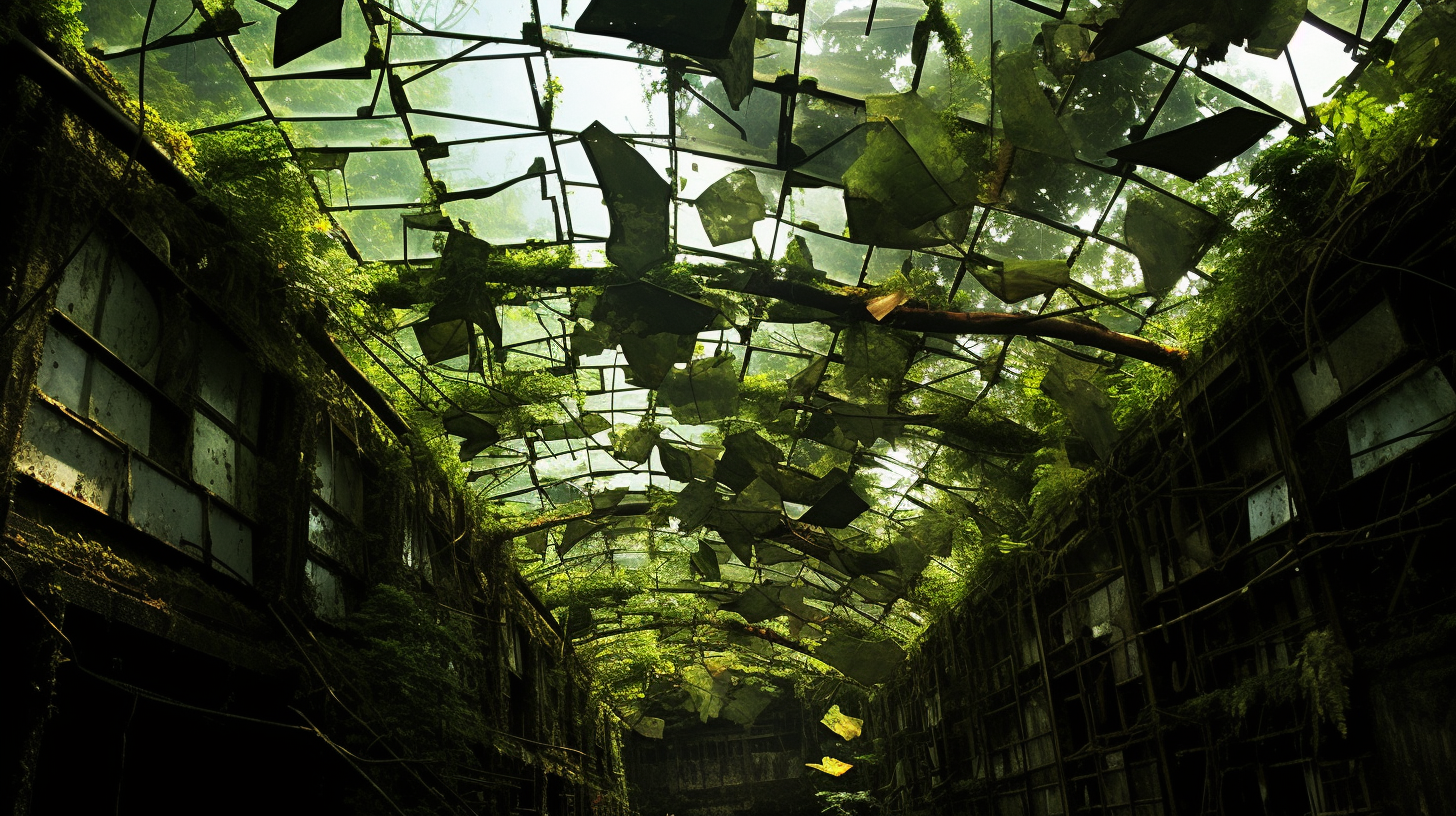The palette of the earth is changing. The lush greens we once admired in the tapestries of our world’s rainforests are dissolving into the mournful browns of decay. Where there was once an intricate ballet of sunlight and shadow through the quivering leaves, there is now a desolate spread of barren branches reaching out like the pleading hands of the forgotten. In Shattered Canopy – When Skies of Green Fade to Brown, we explore the last chapters of a fading legacy.
The sprawling roots that once gripped the earth, anchoring life in all its bustling, verdant glory, are losing their hold. Dramatic climate shifts, relentless logging, and the insatiable human expansion dissect the living tissues of what were our planet’s breathing apparatus. We recall the cries of wildlife – once symphonies to the seasons – now fallen silent, their notes lost to the winds that erode the desiccated soils.
Under the oppressive heat of an angry sun, the forest’s floor is littered with the parched remains of fallen giants. Mighty trees that stood as sentinels for millennia now lie defeated. They remind us of what the futility of resistance looks like when the forces of natural destruction are bolstered by humankind’s ceaseless appetite for more. The rich, humid air – once heavy with the promise of rain – now carries only dust and a foreboding sterility.
Through the lens of our dystopian reality, we trace the consequences of this transformation – not just for the forest’s denizens, but for the fabric of our world. As carbon sinks fail and oxygen factories cease their production, the atmosphere writhes in the throes of change. Climate anomalies no longer anomaly, the headlines might have read in a past where people still clung to hope that change was possible. Heavy with the emissions of a thousand industrial revolutions, the sky morphs slowly yet unyieldingly from blue to an oppressing dome of browns and grays.
Waterfalls, once the lifeblood of these ecosystems, trickle with the morose drip of a tap left running in an abandoned home. The symphony of life – the croaks, the chirps, the rustle of leaves – has stilled. All that remains is the relentless march of destruction, the untempered growth of cities and industries, and the quiet despair of a world too far gone.
All is not serene in this quiet, however. Storms rage with a new ferocity, as if the earth itself is howling in despair. They wash away the fragile topsoil, leaving behind only the bones of the earth, exposed and broken. The damage done is inscrutable, a tangle of lost ecological interactions, and with each species that slips into the void of extinction, a thread in the tapestry of life is undone.
There are stories here—whispers of what once was. The majesty of the jaguar’s gaze, the unrivaled diversity of flora and fauna, the indigenous cultures that thrived in symbiosis with these forested wonders. Now, they are tales told in whispers, if at all, to remind us of the cost of our negligence. In a hushed voice, we might tell of a time when the skies of green were a crown upon the earth, not a shroud.
The shattered canopy is the final witness to a world that was. Its downfall – a record of the excesses and apathy that brought us to this brink. It stands, soil to sky, as both a tombstone and a lesson inscribed in the leaves of history; a requiem for the living.
In closing this chapter, we must soberly acknowledge our role in this lament. As the skies of green fade to brown, they leave behind a void vast and deep – a silence profound and complete. What poems might have been written, what discoveries made beneath the sheltering boughs of a now-broken world, are lost to us. And in their place, a question – what legacy do we leave for the morrows that will never see the forests’ might? Perhaps, in the end, this is the greatest sorrow of them all.
